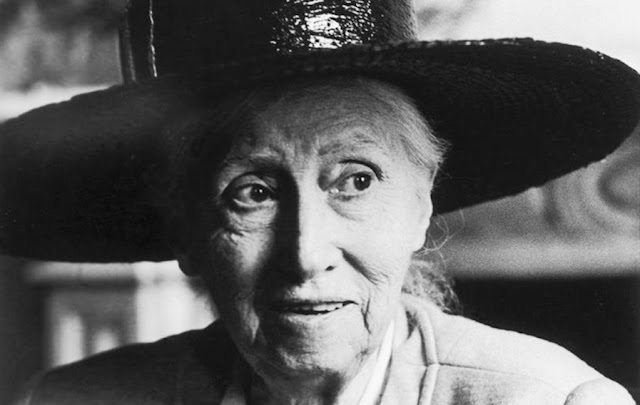La Belleza y el hijo de la Belleza y el romero
-en suma: Venus y Amor, su hijo-,
se supone nacidos del océano,
en Navidad, en mutua compañía
tejen una guirnalda festiva
aunque no siempre de romero -
desde que voló a Egipto, florece indiferente.
Con hojas como lanzas, verdes, pero plateadas por debajo
las flores -blancas originalmente-
se volvieron azules. La hierba del recuerdo,
que imita el manto azul de la Virgen María,
no es demasiado legendaria
para dar flores que a la vez son símbolo y aroma penetrante.
Tras brotar de las rocas junto al mar,
la estatura de Cristo a los treinta y tres años,
se nutre del rocío y con la abeja
“habla un lenguaje mudo”; en realidad
es una especie de árbol navideño.
[Like a bullwark, 1956]
Marianne Moore, (Kirkwood, Misuri, Estados Unidos, 1887-Nueva York, Estados Unidos, 1972), La Nación, Buenos Aires, diciembre 24, 2021
Traducción de Olivia de Miguel
Otra Iglesia Es Imposible - Op. Cit. - De Sibilas y Pitias - Eterna Cadencia - Círculo de Poesía - Buenos Aires Poetry - UNAM - Nueva Revista - Perfil - Letras Libres
Poetry Foundation - The Pulitzer Prizes - Poets - Literary Ladies Guide - The New Yorker - The New York Times
Rosemary
Beauty and Beauty’s son and rosemary–
Venus and Love, her son, to speak plainly—
born of the sea supposedly,
at Christmas each, in company,
braids a garland of festivity.
Not always rosemary—
since the flight to Egypt, blooming indifferently.
With lancelike leaf, green but silver underneath,
its flowers– white originally —
turned blue. The herb of memory,
imitating the blue robe of Mary,
is not too legendary
to flower both as symbol and as pungency.
Springing from stones beside the sea,
the height of Christ when he was thirty—three,
it feeds on dew and to the bee
“hath a dumb language”; is in reality
a kind of Christmas tree.
Complete Poems, Penguin, Nueva York, 1994

No hay comentarios.:
Publicar un comentario